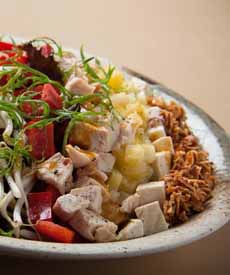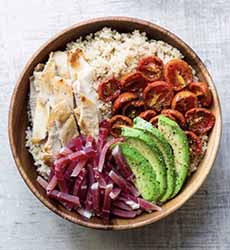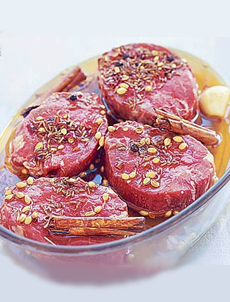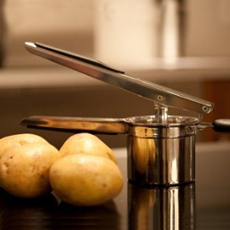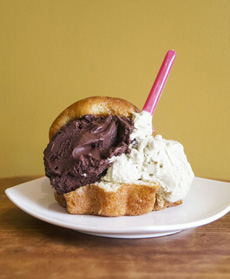|
The Cobb Salad endures on restaurant menus, decades after once-popular luncheon salads such as Allerton Salad, aspics, Russian Salad, spinach salad (with mushrooms and bacon), stuffed tomatoes and Waldorf Salad have faded into obscurity.
And thank goodness it’s still here, because it’s one of our favorites.
THE HISTORY OF THE COBB SALAD
Late one evening in 1937, Bob Cobb, owner of The Brown Derby restaurant in Hollywood, was scrounging in the kitchen’s refrigerator for a snack.
He grabbed a head of iceberg lettuce, an avocado, some romaine, watercress, tomatoes, a cold breast of chicken, a hard-cooked egg, chives, blue cheese and some old-fashioned French dressing*. He took some crisp bacon from one of the chefs and started chopping.
He laid each ingredient in a row, in a bowl.
Cobb shared the salad with his friend Sid Grauman, proprietor of Grauman’s Chinese Theatre, who came back and asked for a “Cobb Salad” the next day.
It was put on the menu and became an overnight sensation. Customers like movie mogul Jack Warner regularly dispatched his chauffeur to pick one up.
Since then, the salad has often been served with the ingredients laid out on the plate in rows, rather than tossed or with the other ingredients layered atop the greens, like a chef salad.
Over time, people have added an extra ingredient, like the ham in photo #1 and the corn in photo #2, celery, bell pepper, scallions, croutons, and so on.
People who don’t like blue cheese substitute Cheddar. People who don’t like tomatoes substitute red pepper. People who don’t eat bacon substitute kidney beans.
There have been variations like Wolfgang Puck’s Lobster Cobb Salad. And now, here’s the Cobb Sandwich.
There’s also a recipe for Asian Cobb Salad below.
RECIPE #1: COBB SANDWICH
Ingredients For 4 Servings
Blue Cheese Mayonnaise
1/4 cup blue cheese
1/4 cup mayonnaise
Avocado Purée
1 cup puréed avocado
1/4 teaspoon lemon juice
Salt and pepper to taste
Sandwich
8 slices sourdough bread
2 ounces mixed greens
8 slices tomato
8 ounces smoked chicken or turkey, sliced (we substituted chunky chicken salad: chunks of chicken lightly dressed with tarragon mayonnaise
8 strips bacon, fried crisp
|
|
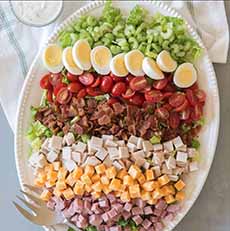
[1] Cobb Salads are typically served with the ingredients in rows (photo © eMeals weekly meal plans).
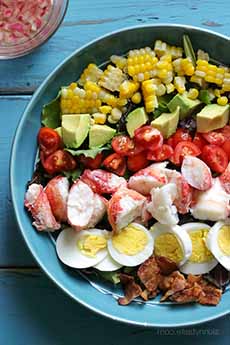
[2] In the chips? Trade the chicken and ham for a Lobster Club Salad. Here’s the recipe from Skinnytaste (photo © Skinnytaste).
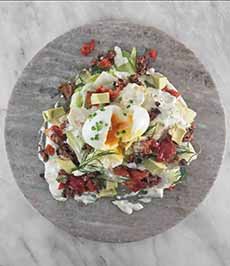
[3] A Cobb Wedge Salad: the Cobb toppings used as a toppings for a wedge of iceberg lettuce (photo © Sid Wainer).
|




